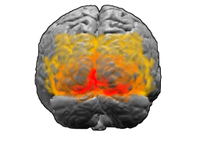
Photo from wikipedia
In this article, we propose a quality assessment model-based on the projection invariant feature and the visual saliency for Stereoscopic Omnidirectional Images (SOIs). Firstly, the projection invariant monocular and binocular… Click to show full abstract
In this article, we propose a quality assessment model-based on the projection invariant feature and the visual saliency for Stereoscopic Omnidirectional Images (SOIs). Firstly, the projection invariant monocular and binocular features of SOI are derived from the Scale-Invariant Feature Transform (SIFT) points to tackle the inconsistency between the stretched projection formats and the viewports. Secondly, the visual saliency model, which combines the chrominance and contrast perceptual factors, is used to facilitate the prediction accuracy. Thirdly, according to the characteristics of the panoramic image, we generate the weight map and utilize it as a location prior, which can be adapted to different projection formats. Finally, the proposed SOI quality assessment model fuses the projection invariant features, visual saliency, and location prior. Experimental results on both the NingBo University SOI Database (NBU-SOID) and Stereoscopic OmnidirectionaL Image quality assessment Database (SOLID) demonstrate the proposed metric on equi-rectangular projection format outperforms the state-of-the-art schemes, the pearson linear correlation coefficient and spearman rank order correlation coefficient performance are 0.933 and 0.933 on SOLID, and 0.907 and 0.910 on NBU-SOID, respectively. Meanwhile, the proposed algorithm is extended to another five representative projection formats and achieves superior performance.
Journal Title: IEEE Transactions on Broadcasting
Year Published: 2021
Link to full text (if available)
Share on Social Media: Sign Up to like & get
recommendations!